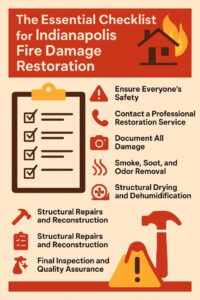Cycling comfort and performance are heavily influenced by two essential components: the bicycle saddle and the seat post. While often considered separate parts, many riders seek integrated solutions where the saddle comes attached to the seat post, providing ease of installation and a harmonized design.
Choosing the right bicycle saddle with seat post can significantly improve your riding experience, reduce discomfort and injuries, and optimize bike handling. This guide explores everything you need to know—from saddle types and seat post varieties to installation tips and maintenance.
1. Understanding the Bicycle Saddle and Seat Post
What is a Bicycle Saddle?
The saddle is the seat of your bike—the part you sit on—and plays a critical role in your cycling comfort. Saddles vary widely in shape, padding, material, and design, each tailored to different types of riding and rider anatomies.
What is a Seat Post?
The seat post is the tube that connects your saddle to the bike frame. It slides into the seat tube and can be adjusted to your preferred height. Seat posts come in various materials and designs, affecting bike weight, durability, and ride quality.
Why Buy a Bicycle Saddle with Seat Post Combo?
Some manufacturers sell saddles and seat posts together as a unit. This can offer several benefits:
-
Compatibility: Ensures perfect fit between saddle rails and post clamp.
-
Convenience: Simplifies installation by avoiding separate component matching.
-
Optimized Performance: Integrated designs can improve vibration damping and weight distribution.
2. Types of Bicycle Saddles
Road Bike Saddles
Designed for performance, road bike saddles are typically narrow, lightweight, and minimalistic. They focus on reducing friction and supporting an aggressive riding position.
-
Features: Firm padding, aerodynamic shape
-
Best for: Speed-focused riders, racing
Mountain Bike Saddles
Built for rugged terrain, mountain bike saddles provide extra cushioning and durability to handle bumps and rough trails.
-
Features: Reinforced edges, shock absorption padding
-
Best for: Off-road and trail riders
Comfort Saddles
Comfort or cruiser saddles are wide with extra padding, often featuring springs for shock absorption. They prioritize rider comfort over performance.
-
Features: Wide design, soft foam or gel padding
-
Best for: Casual riders, commuters, leisure cycling
Specialty Saddles
These include cut-out saddles for pressure relief, split saddles, and ergonomic designs targeting specific anatomical needs.
3. Seat Post Varieties and Their Characteristics
Material Options
-
Aluminum: Lightweight, affordable, corrosion-resistant, standard for many bikes.
-
Carbon Fiber: Ultra-light, excellent vibration damping, higher cost.
-
Steel: Durable and budget-friendly but heavier.
-
Titanium: Strong, lightweight, corrosion-resistant, premium price.
Seat Post Types
-
Standard Seat Post: Straight tube with saddle clamp on top; adjustable height.
-
Dropper Post: Allows on-the-fly height adjustment using a remote lever, popular in mountain biking.
-
Suspension Seat Post: Built-in shock absorber improves comfort on rough terrain.
Clamp Designs
The saddle rail clamp can vary:
-
Single bolt clamp: Simple, allows angle adjustment.
-
Dual bolt clamp: Offers precise tilt adjustment and stability.
4. How to Choose the Right Bicycle Saddle with Seat Post
Assess Your Riding Style and Needs
-
Commuters may prefer comfort saddles with suspension seat posts for a smooth ride.
-
Road racers typically go for lightweight saddles with carbon or aluminum posts.
-
Mountain bikers might prioritize durability and dropper posts for technical trails.
Consider Your Anatomy
Saddle width and shape should match your sit bone width and flexibility. Many bike shops offer sit bone measuring tools to find the perfect fit.
Check Compatibility with Your Bike
Make sure the seat post diameter matches your bike’s seat tube (commonly 27.2mm, 30.9mm, or 31.6mm). Also, verify rail compatibility (most saddles use standard 7mm round rails).
Weight and Material
Balance the need for lightweight components with durability and budget. Carbon fiber posts save weight but come at a premium.
5. Installation and Adjustment Tips
Installing a Bicycle Saddle with Seat Post Combo
-
Insert the seat post into the seat tube, aligning it with the bike frame.
-
Set the height based on your inseam and comfort—generally, your leg should have a slight bend at the bottom pedal stroke.
-
Tighten the seat post clamp to manufacturer specifications to avoid slipping.
-
Adjust the saddle angle and fore-aft position for optimal comfort and pedaling efficiency.
Fine-Tuning for Comfort
-
Tilt the saddle slightly nose up or down depending on pressure points.
-
Move the saddle forward or backward to adjust your reach and weight distribution.
-
Test short rides and make small incremental adjustments.
6. Maintenance and Troubleshooting
-
Regularly check clamp bolts to prevent loosening during rides.
-
Inspect for cracks or damage especially on carbon seat posts.
-
Clean seat post and inside the seat tube to prevent seizing—use grease or carbon assembly paste as appropriate.
-
Replace worn saddles if padding compresses or rails bend.
7. Popular Bicycle Saddle with Seat Post Combos on the Market
Several brands offer integrated saddle and seat post combos:
-
Fizik offers performance saddles with matching seat posts designed for road and mountain bikes.
-
WTB provides rugged saddle and post combos optimized for trail durability.
-
Ergon focuses on ergonomic saddles paired with seat posts designed to reduce pressure and vibration.
-
Thomson is known for high-quality, durable seat posts that fit a range of saddles.
Conclusion: Invest in the Perfect Bicycle Saddle with Seat Post for Your Ride
Your bike’s saddle and seat post are crucial for comfort, efficiency, and injury prevention. Choosing a bicycle saddle with seat post combo can simplify installation, ensure compatibility, and optimize your cycling experience.
By considering your riding style, anatomy, bike specs, and preferences, you can find the ideal saddle-post combination that helps you enjoy every mile in comfort and control. Remember to invest time in proper adjustment and maintenance to get the best performance out of your setup.









